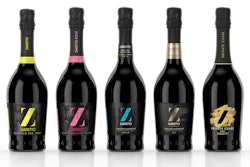
The influence of color on our daily choices is undeniable. Understanding the role and importance of color in the world of consumers and how color is shaping the future of brands and packaging helps us to better understand, attract, and connect to our ideal customers.
To understand the use of color in retail, we need to know how the retail experience impacts the consumer, and how the current spectrum of color came into being.
In the past, fewer products and packaging types meant there were fewer colors to play with on the packaging. As competition steadily increased, there was an eruption of brands, resulting in availability of a wide range of similar products in each category. The competition for brand identification expanded the color palette, bringing more colors to the retail store.
Following are three ways to ensure the colors used in packaging are relevant to consumers.
1. Maintain consistent color and identity
Each shade resonates with consumers at a unique level. In the world of branding, the use of color improves brand recognition, and customers make a subconscious assessment about brands within 90-seconds of initial viewing.
International brands such as Coca-Cola, Pepsi, and Cadbury have made their mark in the industry by maintaining a consistent brand color throughout all the brand marketing collateral, from logo to OOH (out-of-home) advertisements.
According to a survey conducted by Reboot, color increases brand recognition by 80%, which is reciprocated by many influential brands. In the instance of Coca-Cola and Pepsi, both brands produce the same product. But only when the product is packaged under the respective brand color do consumers automatically recall the brand. Brand recognition retains the memory in brain, and subconsciously that brand now becomes a personal preference when a customer is making a repeat purchase.
2. Adapt to geographical locations and culture
Eighty-five percent of grocery shoppers cite color as their primary reason for buying a particular product, therefore brands must follow their color palette to maintain a consistent brand perception. Color is the cue that is used by the brain to help identify and make predictions about the products such as taste and flavor.
Color creates a psychological expectation or associates a particular flavor with a specific packaging color. For instance, in the APAC region, a yellow bag of chips is immediately associated with cheese flavor, while the pink colored bag is associated with salt and vinegar flavor.
However, packaging colors are also influenced by the brand’s target geographical location and culture, giving rise to different expectations. Taking the chips bag as an example again, while the pink colored bag of chips is generally associated with salt and vinegar flavor in APAC, it is linked to prawn cocktail flavor in the U.K. The difference of flavor for the packaging of the same color reflects the nature of the individual market’s recognized palette.
3. Create emotional connections with taste perceptions
Color can both mirror and influence our emotions. It can affect how shoppers feel about a product or brand. Brand color can evoke strong emotional associations and also influence taste perceptions. We are often triggered to imagine the taste of the food before our taste buds get a chance. This can predetermine how we will perceive the taste and flavor of the product.
In the case of 7UP, customers reported an expected lemon and lime taste for the regular 7UP packaging. Upon enhancing the color of the packaging by adding 15% more yellow to the green on the 7UP packaging, consumers reported that it has a stronger lemon and lime flavor before the drink is tasted. Modifying the color on packaging impacts the perception and can psychologically influence consumers to perceive its taste differently.
Evolving consumers and their needs spills over to the type of colors used by brands. Now more than ever, color is heavily influenced by lifestyle, gender, culture, social interaction, social channels, globally trending issues, and personal interests.
Color palettes are gaining more extensive vocabulary to match the growing needs of consumers. It is paramount for brands to maximize colors to create an impact, help shoppers locate their products, simplify the consumer’s choice, be distinguishable from other brands, and educate consumers with the right brand messaging.
Steve Jackson leads the SGK Australia and New Zealand business, encompassing the creative business under its ANTHEM brand and its deployment and production figurehead SCHAWK.


























